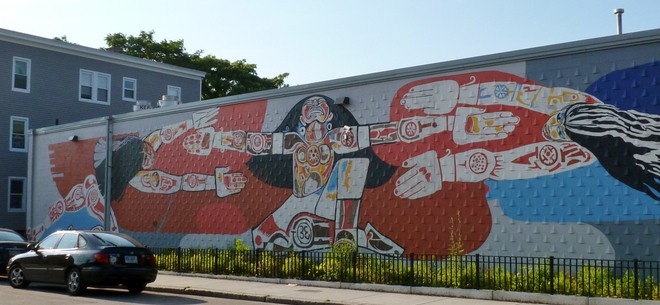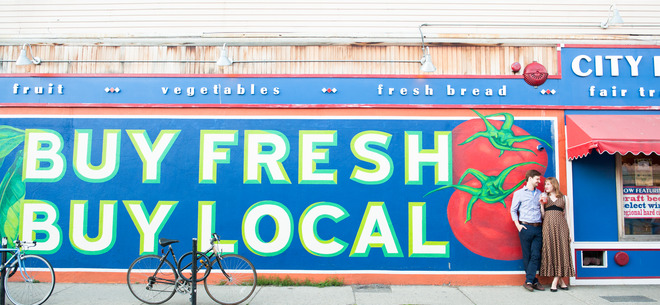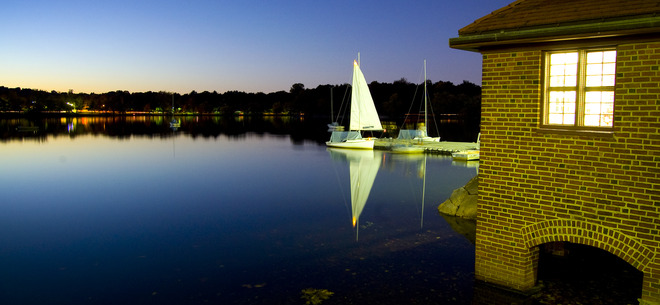
Perhaps the most definitive characteristic of Jamaica Plain is it’s color, which can be found in it’s wall murals adorning buildings on every street, in it’s wealth of nature, from Jamaica pond to the Arboretum, and in it’s unique shops and restaurants, from the original City Feed & Supply to the independent bookshop Papercuts.
If you’re wondering where Jamaica Plain got its name, there are a few theories. Some say that it has to do with the Jamaican rum that was popular when the area was settled, while a more likely supposition is that “Jamaica” is an Anglicization of the name Kuchamakin, the regent chief of the Native American Massachusett tribe at the time.
Located off of the Jackson Square and Stony Brook T stops, JP (as the locals call it) has a long history. Initially settled by colonists in search of farmland outside the city, Jamaica Plain eventually developed into one of America’s first streetcar suburbs. Now, JP is home to many young families, a large Hispanic and Latin community, and a growing LGBT community.
Much of the rich culture of the area can be seen on the back walls of grocery stores and in side alleys. Most of these murals exist as homages to the many cultures of the community. One famous mural was done by Puerto Rican Rafael “Sonny” Rivera García in 1984. Located behind the Whole Foods on Perkins Street, the massive depiction of three Gods of the Taino peoples honors the Taino culture of what is today Puerto Rico. The mural is done in bright reds and blues, with intricate geometric shapes, and represents a mother goddess holding her two sons—one the god of night-wind destruction, the other the protector of earth from hurricanes—apart.

The unique triple-decker homes are also a trademark of JP, many of which are personalized with bright paint, woodwork, and decorations. Builders popularized this style in the late 1800’s, and many of the original houses stand today. A walk through the neighborhood from the Stony Brook T stop to bustling Centre Street is an adventure in architecture, each house a different color with its own charm, all blanketed underneath an umbrella of leafy green trees.
A stroll down Centre Street in JP can be the best way to immerse yourself in the culture of the neighborhood. JP is known for supporting local businesses emphasizing in protecting the environment, fair-trade commerce, sustainable agriculture, and community involvement.
At 461 Centre Street is JP Knit and Stitch, the local fabric store with a personal touch. You can purchase homemade sewing kits, which come in a canvas bags with original designs printed on the front, with hand selected tools from inside. Knit and Stitch also offers sewing classes, and community members’ projects can be found on display.
If you’re big on burgers, be sure to stop at 605 Centre Street where Grass Fed sells their all-natural patties. Known as a burger joint with strong values, they emphasize providing a burger that’s better for you. They also serve “adult” milkshakes featuring ice cream and booze—we won’t tell your kids if you won’t.
A block down the way at 617 Centre Street is FoMu, a dessert mecca specializing in alternative ice cream with funky flavors from rosewater saffron to avocado (don’t be scared, they have chocolate and vanilla too). Though the taste is a bit acquired—don’t think ice cream, think frozen coconut milk—this place is a dream for lactose intolerants and dairy-lovers all the same.
If you’re in the mood for more traditional ice cream with an unconventional flare, check out JP Licks’ flagship store at 659 Centre Street where it all started, and where they’ve got intense flavors like Chili Chili Bang Bang, La Cocoa Racha and Rocky-er Road. Bonus: it’s decked out in cute cow-décor.
To end your jaunt down Centre Street, check out AID’s action committee’s award-winning thrift store, Boomerangs, located at 716 Centre Street and boasting a stylish array of vintage treasures. Fellow thrift shop connoisseurs will tell you that it’s the best place to snag some “hip swag.”

The Emerald Necklace is located a few minutes’ walk from the main thoroughfare. This chain of greenways and parks throughout the city of Boston has two major gems in JP, Jamaica Pond and the Arnold Arboretum. Jamaica pond, a 68-acre body of water, is perfect for sailing or strolling along the banks. Keep walking down the Necklace path and you’ll hit the Arnold Arboretum, a National Historic Landmark established in 1872, which covers 281 acres and provides the perfect escape from the bustle of Boston. You can relax under an endless umbrella of trees and soak in the living plant collection that renowned American landscape architect Frederick Law Olmsted established hundreds of years ago.
If you find yourself in JP with a hankering for some hops, you’re in luck—the area has a rich history of breweries. The Highland Spring Brewery (est. 1868), the Eblana and Park breweries and the American Brewing Company (est. in the 1880s) and Franklin Brewery (est. 1894) enjoyed success in the area until Prohibition put an cork in production. Nowadays, you can visit the Samuel Adams Brewery located in the original Haffenreffer Brewery building (est. 1870) at 30 Germania St. Open every day of the week but Sunday, tours are available until 3 pm. You can even catch a flight night, every Wednesday, to taste everything from the classic Boston lager to their more experimental and summer brews.
Ultimately, thanks to all this color, it’s a steadfast guarantee you’ll be hard-pressed to have a dull time in Jamaica Plain.


